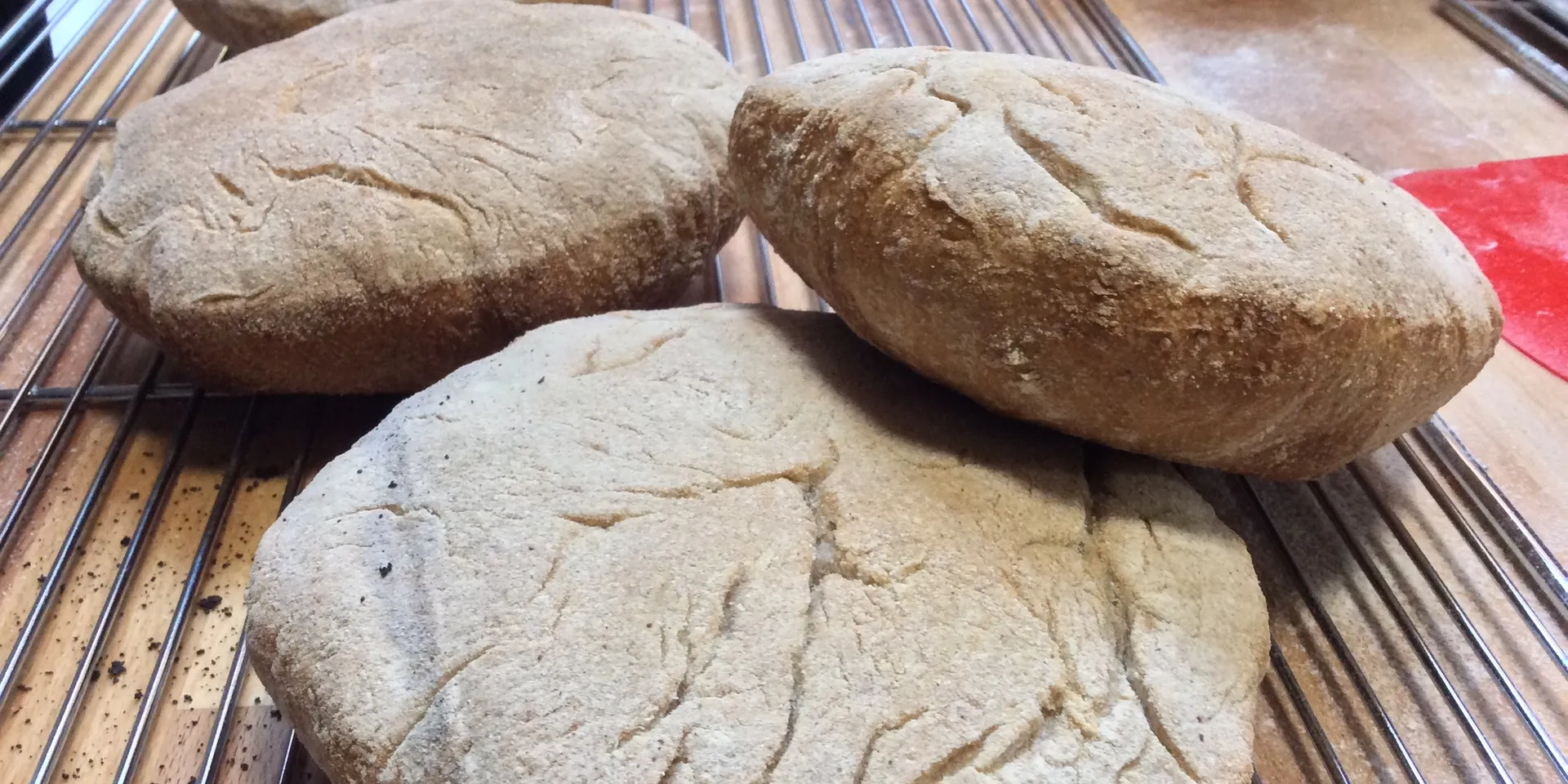What is a Stottie cake?
Updated:

"The same dough, used for a different style and tradition; the stottie." by Veronica Burke at Bread Matters is licensed under CC BY-ND 2.0. To view a copy of this license, visit https://creativecommons.org/licenses/by-nd/2.0/?ref=openverse.
Table of Contents
What is the history of Stottie cake bread:
Ingredients in Stottie cake bread:
Stottie cake is an old-fashioned English bread that comes from the north of the country. It has a long history in the area and is considered an essential part of the cuisine of the region. The traditional shape of a Stottie cake is a round and flat disc that has a crumbly outside and a fluffy, soft within. It is frequently consumed as a snack, or it is utilised as the foundation for sandwiches.
The conventional method for producing bread is utilised in the preparation of stotie cake. This method entails combining flour, water, yeast, and salt to produce a dough. The completed bread is made by first kneading the dough, then shaping it, and then baking it.
Stottie cake has a great flavour and a flavour that is somewhat sweet. It also has a texture that is little chewy. Bakeries and grocery stores all around the north of England stock it because of its widespread popularity among the local populace and because it is available there. In spite of its worldwide popularity, Stottie cake has maintained its authenticity by continuing to be prepared in the traditional manner, employing the traditional methods and components that give it its distinctive flavour and texture.
What is the history of Stottie cake bread:
The history of stotties cake bread is deeply linked with the history and culture of northern England, which is where the bread first appeared. Stottie cake has a long heritage in the area and was most likely initially created by bakers who prepared their bread using grains cultivated in the area.
It is believed that the name "Stottie cake" originated from the word "stot," which is a dialect term used in the north of England to refer to a thing that is heavy and substantial. It is said that the bread got its name "Stottie cake" because of its round, flat shape and strong consistency when it was first made.
People from all across the region take pleasure in eating Stottie cake, which has developed over the years into an essential component of the north of England's long-standing culinary history.
Stottie cake may be found in many locations across the north of England in the modern day, and many people love eating it as a snack or using it as the foundation for sandwiches. In spite of its worldwide popularity, Stottie cake has maintained its authenticity by continuing to be prepared in the traditional manner, employing the traditional methods and components that give it its distinctive flavour and texture.
Ingredients in Stottie cake bread:
The North East of England is known for its love of a particular variety of bread known as stotties cake. The following is a list of the components that you will want in order to prepare stottie cake bread:
- 500g strong white flour
- 10g salt
- 10g fast-action yeast
- 300ml warm water
- 1 tablespoon vegetable oil
Stottie cake bread Nutritional Information?
The nutritional content of stottie cake bread will depend on the specific recipe
that is used to make it. In general, stottie cake bread is made with flour, water,
salt, and yeast, which means that it is a source of carbohydrates, protein, and
various micronutrients.
One serving (100g) of stottie cake bread made with white flour is likely to
contain the following nutrients:
- Calories: 246
- Total fat: 1.6g
- Saturated fat: 0.2g
- Cholesterol: 0mg
- Sodium: 489mg
- Total carbohydrate: 50g
- Dietary fiber: 2g
- Sugars: 1.7g
- Protein: 9g
I hope this information is helpful! Let me know if you have any other questions.
How to make Stottie cake bread:
To make stottie cake bread, you will need the following ingredients:
- 500g strong white flour
- 10g salt
- 10g fast-action yeast
- 300ml warm water
- 1 tablespoon vegetable oil
Instructions:
- Flour, salt, and yeast should all be mixed together in a large mixing dish.
- After adding the warm water and oil, mix the ingredients together until the dough begins to come together.
- Knead the dough on a surface that has been dusted with flour just sparingly for approximately ten minutes, or until it is silky smooth and elastic.
- Put the dough in a basin that has been gently greased, cover it with a wet towel, and let it rise in a warm location for approximately an hour, or until its size has doubled.
- Put the oven on to a temperature of 200 degrees Celsius (400 degrees Fahrenheit).
- After punching down the dough, cut it into four halves that are all the same size. Form each piece into a circular loaf using your hands.
- Bake the loaves for 20 to 25 minutes, or until they are golden brown and sound hollow when tapped on the bottom. Place the loaves on a baking sheet.
- Take the loaves out of the oven and set them on a wire rack so that they may cool down before serving.
